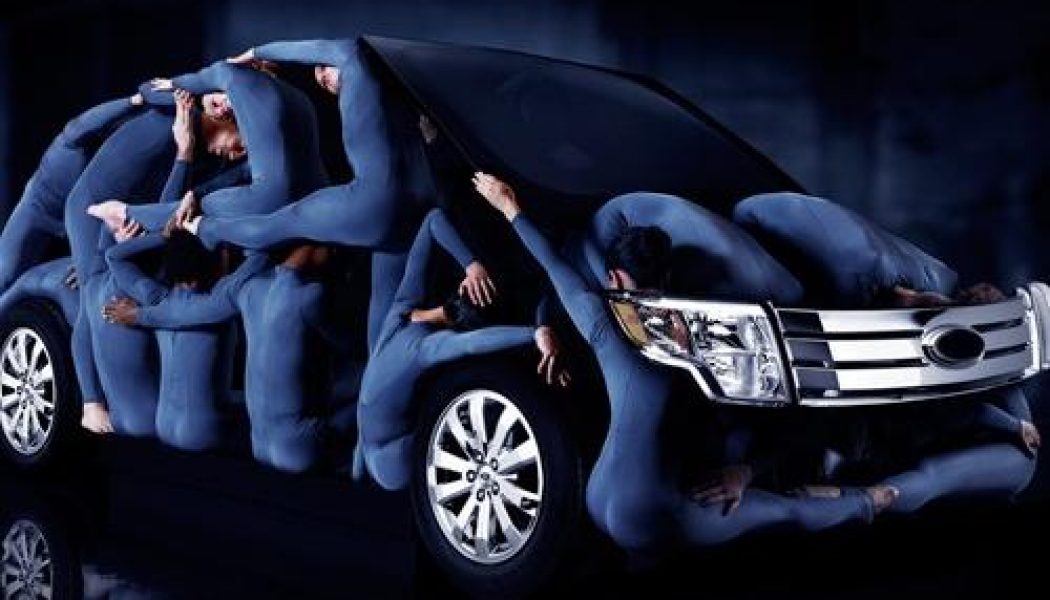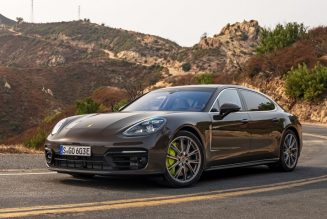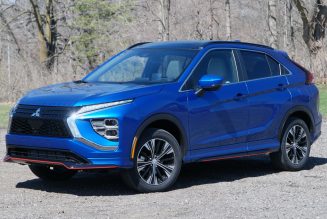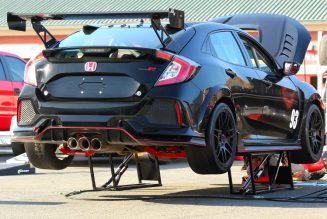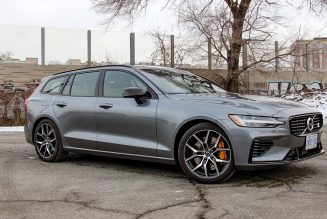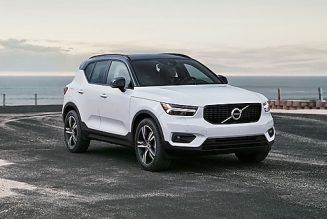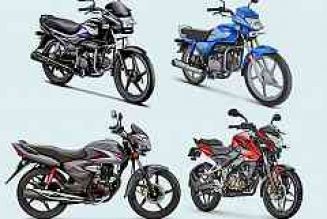Every so often Toyota, purveyor of sensible, family-friendly SUVs, minivans, and sedans, builds a car that absolutely blows you away: The 2000GT that debuted in 1965 and was intended to take on the Jaguar E-Type; the rally-inspired Celica GT-Four of the early ’90s; the flawed but fabulous Lexus LFA with its screaming naturally aspirated V-10. The 2020 Toyota GR Yaris is without a doubt a member of this select group. In fact, it might be the best of the lot. You see, this little hot hatch, specifically designed and engineered to allow the Yaris to compete in the World Rally Championship, is perhaps the most focused driver’s car you can buy right now this side of a Porsche 911 GT3 RS.
First things first: The GR Yaris has nothing in common with the subcompact hatchback sold in the U.S. as a Yaris. That car is a rebadged Mazda 2. Nor, in truth, does it have much in common with the Toyota-designed and -developed XP210 Yaris launched in Japan, Europe, and Australasia during 2020. In fact, the only parts the GR Yaris shares with the XP210 are its front and rear lights, exterior rearview mirrors, and the roof antenna.
The GR Yaris rolls on a unique platform that combines a chunk of the GA-B platform from the XP210 Yaris with a rear section adapted from the GA-C platform that underpins the Corolla and C-HR crossover. Front suspension is MacPherson strut with strengthened components, while at the rear is a bespoke multilink setup. There are massive disc brakes at each corner; the 14.0-inch front rotors are larger than those on the GR Supra. Rear rotors are 11.7-inch items. Wheels are 18-inchers, shod with 225/40 tires.
The front and rear axles are linked by the first new AWD system developed by Toyota in 20 years. Simple and light, it features a fast-response center coupling that can be set in three modes—Normal, which sends 60 percent of the torque to the front wheels; Sport, which sends 70 percent to the rear wheels; and Track, which splits the torque 50:50. A hypoid gear transfer case links a conventional six-speed manual transmission to the all-wheel-drive system.
Motive power comes courtesy of a turbocharged, 12-valve, 1.6-liter three-cylinder engine that makes 257 hp at 6,500 rpm and 265 lb-ft of torque from 3,000 rpm to 4,600 rpm. Why three cylinders? “We preferred this engine due to its light weight and compact size,” development project leader Atsunori Kumagaya said. “It’s simple to install, and the lack of exhaust gas interference made it easier to obtain power.” Competition-spec features include oil jets to cool the pistons, large exhaust valves, and a turbocharger whose turbine spins on ball bearings.
It is, says Toyota—which had to petition the FIA to allow a three-cylinder engine in the World Rally Championship—the smallest and lightest 1.6-liter turbo motor in the world, and the most powerful three-cylinder production engine in the world.
All this hardware is wrapped in a light and rigid body that, while sharing basic design elements with the XP210, is totally unique to the GR Yaris. The regular Yaris is a five-door hatchback; the GR Yaris is a three-door to meet WRC regulations. The GR Yaris is 2.2 inches longer and 2.4 inches wider than the standard car, but new A-pillars, new body side stampings, and a new roof mean the GR is 1.8 inches lower. In fact, the roof drops dramatically toward the rear of the car, to the point where its rearmost point is 3.7 inches lower than that of the regular Yaris. That’s to help get the giant rear spoiler of the factory rally cars more prominently into the airflow, increasing downforce.
About 10 percent of the body structure of the GR Yaris is aluminum, which helps make it 84 pounds lighter than that of the regular car. It has 6 percent more welds and 70 percent more structural adhesive to increase rigidity. The hood, tailgate, and doors are aluminum, and the roof is made from forged carbon fiber, which saves 7.7 pounds compared with a regular steel panel and helps lower the car’s center of gravity. In the lightest of its three trim levels, the GR Yaris weighs just 2,822 pounds.
All-wheel drive and a weight-to-power ratio that’s not far off that of a Porsche Boxster means good performance. Toyota claims a 0-62 mph time for the GR Yaris of 5.5 seconds. Top speed is electronically limited to 143 mph. It feels quicker.
That’s partly a function of size. You simply don’t expect a car smaller than a Corolla to deliver the neck-snapping launch and determined acceleration of the GR Yaris. That little engine is relentless, especially above 4,000 rpm and all the way to the 7,000-rpm redline. The six-speed manual, the lever deliberately placed higher and closer to the steering wheel than in other manual Toyotas, shifts with a chunky accuracy. A proper rally-style dual-clutch transmission would make the GR Yaris even quicker, but the six-speed’s well-spaced ratios and the engine’s lack of turbo lag, combined with meaty midrange torque, means it’s never caught short when you’re attacking the twisties.
The GR Yaris feels like a car developed by race engineers. The brakes are superb, the steering—once you switch off the lane-keeping nanny—is accurate and well weighted, with a steering wheel that’s just the right diameter and with a rim section that’s not too thick and chunky. You sit strangely high in the car, but the sport seats are supremely comfortable and supportive, and the pedal heights and weights are just right.
Our test car was the top-of-the-range GR Yaris Circuit Pack, with forged alloy wheels (saving 22 pounds over a set of standard alloys) and Michelin Pilot Sport 4S tires instead of the Dunlop SP Sport Maxx 050s fitted to the base and Convenience Pack models, along with track-tuned suspension and Torsen limited-slip differentials front and rear. It rides firmly, the body motions taut and tidy, but the suspension soaks up sharp bumps with surprisingly fluency, the stiffer body shell eliminating impact resonances. The short wheelbase and wide track mean the car feels busy on a rough road, but it has none of the dreadful pogoing motions that blighted the 2017 Ford Focus RS.
But what’s most impressive is how smoothly the GR Yaris gets into corners—there’s none of the pointy, edgy, lift-off oversteer some hot hatches demand—and how concisely it tracks through them. You can go to power much earlier than in any of its front- or even all-wheel-drive rivals and let the differentials do their thing. Just steer where you want to go, and the GR Yaris will go there. There isn’t a hot hatch on the planet that gets out of corners as quickly and confidently as this Toyota.
You’ll climb out of the GR Yaris after a blast down your favorite driving road grinning with delight at just how eager, communicative, balanced, and accomplished this little car feels. You’ll stare at the badge and shake your head: This is a Toyota?!! Then you’ll remember that the top-spec Circuit Pack model costs less than two-thirds the price of a Ford Mustang Shelby GT500 and 40 percent the price of a Porsche Cayman GT4, two of the best driver’s cars you can buy for $100,000 or less. And you’ll burst out laughing.
The GR Yaris proves what we’ve always known: Toyota can build performance cars as talented and engaging as the best of them. The GR Yaris, virtually hand assembled by top technicians at the Toyota Gazoo Racing facility inside the Motomachi plant in Toyota City, Japan, exists because it allows the Yaris World Rally Championship car to have the right engine and the right body configuration to make it competitive. “The GR Yaris Circuit Pack is as close to the Yaris WRC as you can get without joining the rally team,” Toyota WRC driver Jari Matti Latvala said. And he’s right.
| 2020 Toyota GR Yaris | |
| PRICE | $39,000-$44,000 (MT est) |
| LAYOUT | Front engine, AWD, 4-pass, 2-door hatchback |
| ENGINE | 1.6L/257-hp/265-lb-ft turbo DOHC 12-valve I-3 |
| TRANSMISSION | 6-speed manual |
| CURB WEIGHT | 2,850-2,900 lb (mfr) |
| WHEELBASE | 100.8 in |
| L x W x H | 157.3 x 71.1 x 57.3 in |
| 0-62 MPH | 5.5 sec (mfr est) |
| EPA FUEL ECON, CITY/HWY/COMB | Not rated |
| ON SALE | Currently (global markets only) |
